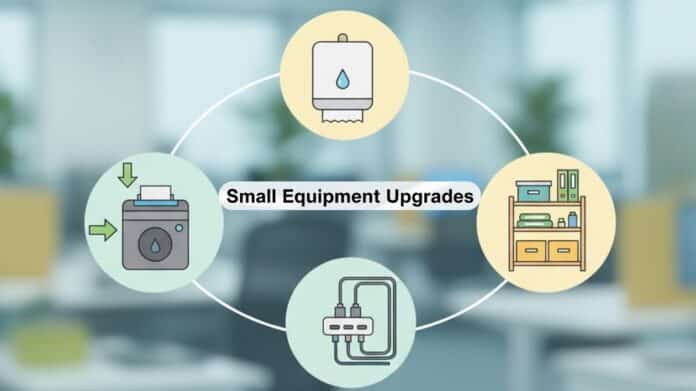Office efficiency is often linked to major changes such as new software, team restructuring or layout redesigns. Yet in many workplaces, what slows people down on a daily basis has nothing to do with strategy and everything to do with small, practical obstacles. Slow printers, disorganised shared areas or missing basic tools generate more interruptions than most managers realise. A few targeted equipment updates can reduce waiting time, keep communal spaces orderly and remove minor frustrations that gradually drain focus.
Reducing paperwork delays through better document handling
Printouts, signed forms and confidential records still circulate in many offices, even when most processes are digital. Problems arise when documents stack up on desks or need to be disposed of securely. Adding a dedicated paper shredder in a shared zone prevents sensitive material from being left in recycling bins or waiting for occasional outsourced disposal. It also saves time for staff who need to clear space quickly before switching tasks. When the process is quick, discreet and located near workstations, employees are far more likely to handle paperwork immediately instead of creating hidden clutter piles that grow over time.
Improving hygiene in shared spaces
Kitchens, meeting rooms and washrooms are high-traffic areas where small equipment upgrades can make a visible difference. Wasteful stacks of loose paper towels or messy rolls often create more cleaning than convenience. Installing paper towel dispensers keeps surfaces tidy and limits unnecessary touching, which is better for hygiene and restocking. The benefit is not only sanitary: a cleaner shared space signals respect for colleagues and reduces the silent frustration that comes from constantly tidying up after others.
Small changes, compounding gains
These upgrades are not about transforming the office, but about removing friction. A tool that eliminates five interruptions a day across twenty employees represents hours recovered every week. The same principle applies to other subtle improvements: labelled shelves in storage rooms, a fixed station for parcels, or charging hubs that prevent cables from circulating desk to desk. None of these changes are dramatic, yet together they create a workplace that feels predictable instead of reactive.
When equipment supports workflow instead of interrupting it, employees spend less energy compensating for what is missing and more on the work they were hired to do. Office comfort is not only about furniture or lighting; it is also about avoiding small daily obstacles that absorb attention. A smoother office is rarely built in one large step. It is the result of many small, smart decisions that make work feel lighter, not harder.






